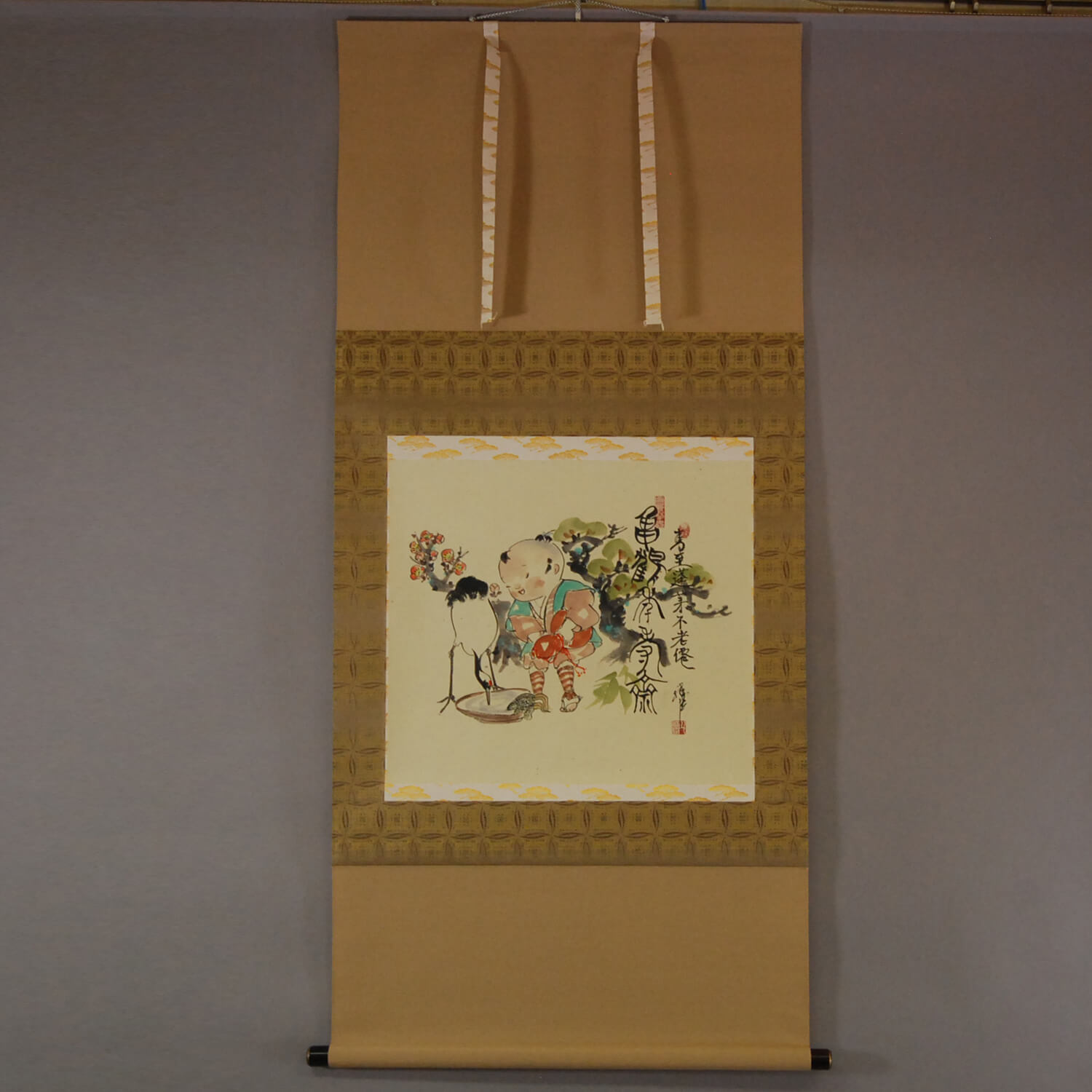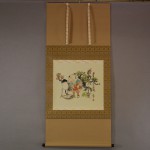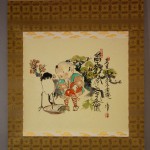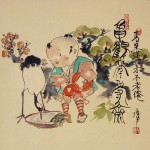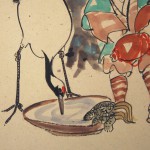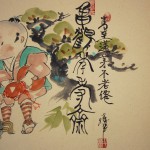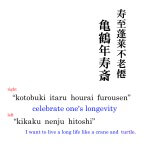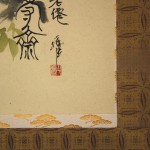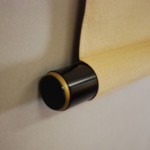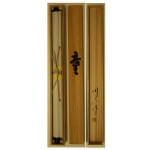Products Lineup
News / Blog
Other Menus
Child in an Old Fashioned Style: a Crane and a Turtle / Katsunobu Kawahito - Warabe: Shou-chiku-bai-tsuru-kame
- Product ID
- 0129
- Name
- Katsunobu Kawahito
- Profile
1922-2019
A member of the Nitten Exhibition- Size
- 725mm x 1480mm
- Roller End Material
Decorative red sandalwood- Material of the Work
- Japanese paper
- Price
- JPY 195,000
- Stock Condition
- In stock
- Payment: Click the Paypal Mark
- Duty and Taxes
Import duty and taxes are beyond our control and may apply to your shipment. Please noted that these fees are the responsibility of the buyer.
- Description
Katsunobu Kawahito often paints children in an old fashioned style, which gives his works a human interest and makes them heartwarming. In this painting, the child offers “sake” (Japanese rice wine) to the crane and the turtle, which are symbols of longevity. This work is typical of Katsunobu Kawahito, who loves sake. We can almost hear the sounds of a party. The calligraphy is about wishing for longevity. The depictions of the pine tree, bamboo and plum tree give an auspicious atmosphere to this work, because it is believed that “shou-chiku-bai” (a combination of pine, bamboo and a plum tree) is a lucky symbol. Although they are simply depicted, we can see his high degree of painting skill from these depictions through quick brushwork and minimal detail.

